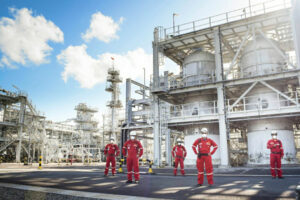
LNG investments to drive the economy to greater heights
Given the energy needs of a country like the Philippines, with the added pressure of recovering fully from the economic effects of the pandemic-driven recession and our pursuit of a better life for millions of our people, and given the impending depletion of the Malampaya gas field, it is important to find reliable and sustainable means of powering our nation’s economic activity.
Our industrial, commercial, and other critical sectors are now recovering and growing, this means that our energy requirements are also surging. Meeting this demand is challenging since our reserves of indigenous natural gas in Malampaya are declining at an alarming rate. Indeed, it is only a matter of time before this precious resource is exhausted. What will happen to us, then?
The availability and sustainability of supply will be felt not just by big players in key economic sectors, but by ordinary consumers as well. After all, it is ordinary people who suffer most from the effects of frequent disruptive power outages that affect their way of life and compromise a future in which they could be upwardly mobile and attain greater quality for themselves and their families.
While finding and developing an energy source is important, it is equally crucial to ensure that the supply is stable, thus protecting against price fluctuations that would surely affect the electricity bills of all consumers. A reliable energy supply reduces risks of energy-outages that we all know results in costly disruptions of all economic activity. Energy-intensive industries such as manufacturing and technology require higher electricity consumption. Energy security supports these industries’ growth.
One option to meet this demand for energy is to tap into liquefied natural gas (LNG) by developing the downstream natural gas industry.
Not many people are familiar with LNG yet, much less its immense potential to drive economic growth, prosperity, and equity. This is all the more reason we should generate conversations about this energy source and economic driver.
The development of a thriving and competitive LNG industry would lead to energy security that would support the growth of industries, thus stimulating various sectors of the economy and creating millions of job opportunities.
So, what is the government doing about LNG?
As expected, legal and regulatory policies on LNG are still in their early stages. In May 2023, Senator Raffy Tulfo filed Senate Bill 2247 or “An act promoting the development of the Philippine downstream natural gas industry.” This legislative proposal highlights the need for clear, comprehensive, and integrated legislative policies to aid the rapid development of the natural gas sector in the Philippines.
One of the objectives of the bill is to “ensure transparent and reasonable price of natural gas and rates for its importation, storage and regasification, transmission, and distribution in a regime of open and fair competition and full public accountability that shall promote greater operational and economic efficiency and enhanced competitiveness of the Philippine products in the global market.”
Months later, or on March 11, 2024, the Senate Committee on Energy, along with the Ways and Means and Finance committees, held a Technical Working Group (TWG) hearing to seek inputs from the government, private sectors, and other stakeholders in finalizing the bill.
During the TWG hearing, Ernie Pantangco, former chairman of the Management Association of the Philippines (MAP), emphasized that LNG is a crucial component of our baseload generation requirements. He noted that LNG and natural gas use in the country are still in their infancy stages. He stressed that the bill aims to promote the development of natural gas and LNG as critical components of our power generation requirements of industries.
To realize the economic benefits of LNG, more infrastructure investment is needed for the use of natural gas in power generation in the Philippines, such as LNG terminals, floating storage and regasification units, and pipelines. This opens opportunities to expand natural gas utilization from its current use in power generation to industrial, commercial, and transport use, among others. As using LNG as fuel for power plants results in half the carbon emissions of coal, one big benefit is the substantial reduction of greenhouse gases from power generation.
A good example is the $3.3-billion deal among Meralco PowerGen Corp., Aboitiz Power Corp., and San Miguel Global Power Holdings Corp. which aims to launch an LNG facility in Batangas province.
According to the companies, the facility will serve as a destination to receive, store, and process LNG for two power plants that supply electricity to the Luzon grid. With a capacity of 2,500 MW, the LNG facility is expected to meet the projected increase in peak demand of a fast-recovering economy. It promises to be a stable and dependable bridge fuel that will facilitate the country’s transition to renewable energy sources.
This rare partnership among the country’s most successful business groups is expected to inspire more interest in the potential of LNG. After all, if the best minds of the country’s top firms find it viable to pool their resources to make this happen, then the prospects for the Philippine economy moving up to greater heights is indeed exciting.
Victor Andres “Dindo” C. Manhit is the president of the Stratbase ADR Institute.



